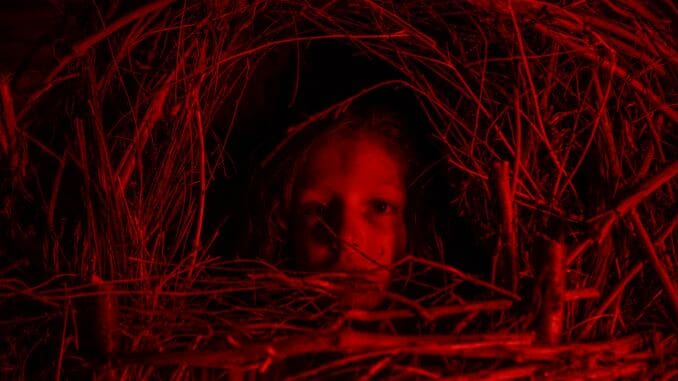A Classic Horror Story Unravels Into Meta Messiness

The recent litany of horror film pastiche endures with Netflix’s A Classic Horror Story, an Italian amalgamation of the most recognizable aspects of genre staples ranging from The Texas Chain Saw Massacre to Cabin in the Woods. As the film’s title suggests, directors Roberto de Feo and Paolo Strippoli are namely interested in weaving together some of the most successful scenes from recent and time-honored horror staples into a staunchly meta commentary—yet this process of borrowing and blending ultimately yields unconvincing results.
With nothing but a beat-up RV at their disposal, a motley crew of strangers gear up for a road trip to the south of Italy. Elisa (Matilda Lutz) is traveling to have an abortion at the behest of her controlling mother; lovers Sofia (Yulia Sobol) and Mark (Will Merrick) have grand romantic plans to elope; film student Fabrizio (Francesco Russo) chauffeurs the rest of the group on his way to visit Calabrian family members; and rounding out the group is the middle-aged Ricardo (Peppino Mazzotta), an introverted doctor who bides his time until he’s dropped off to see his beloved daughter. However, everyone’s arrival at their respective final destinations is indefinitely delayed when the RV swerves off the road into an embankment in the dead of night, with the road (and cell phone service) mysteriously vanishing as a result. A dilapidated star-shaped house eerily appears in the middle of the barren field which suddenly surrounds the RV with desolate woodland. The abode appears abandoned, but the group can’t help but feel they’re being watched—and hunted.
The beginning of the film is an overt homage to Tobe Hooper’s The Texas Chain Saw Massacre, yet the viewer is temporarily alleviated—A Classic Horror Story isn’t ripping off the notorious Leatherface and his cannibalistic clan. Instead, the film reaches into the horror zeitgeist and creates an equally detestable Frankenstein’s monster of ceaseless references and allusions. Films as varied as Midsommar and The Village are dissected in their ability to shock audiences, then are carelessly extrapolated in order to make the filmmakers’ conflicting, conflated point about the state of horror filmmaking—particularly when it comes to their native Italy. The film is ostensibly tackling the merits of auteurism within the genre—specifically targeting the styles of Hooper, Shyamalan and Aster—but fails to point the lens at any of Italy’s masters. The lack of notable essence of Mario Bava, Dario Argento or Lucio Fulci (to name a few) further muddles the film’s conspicuous attempt to lambast Italy’s cinematic industry and output as it relates to global horror offerings.
-

-

-

-

-

-

-

-

-

-

-

-

-

-

-

-

-

-

-

-

-

-

-

-

-

-

-

-

-

-

-

-

-

-

-

-

-

-

-

-








































